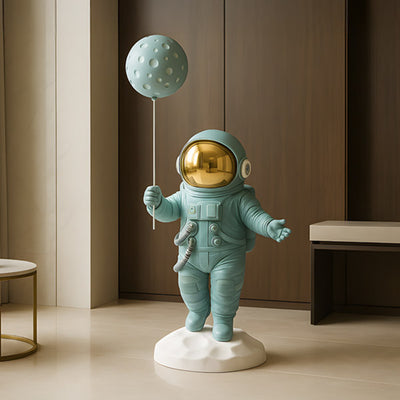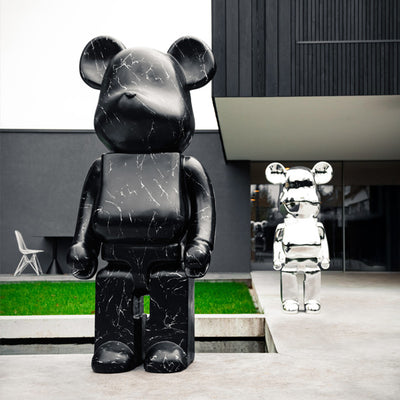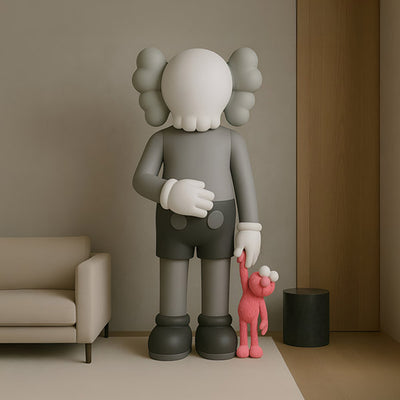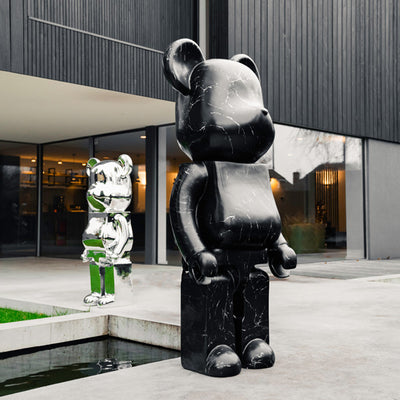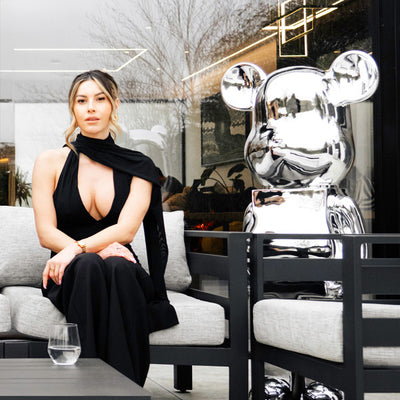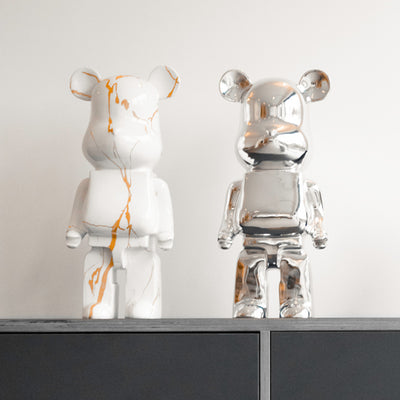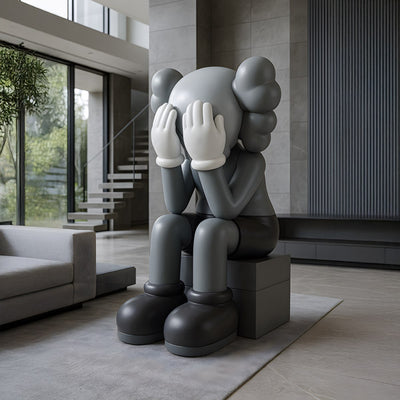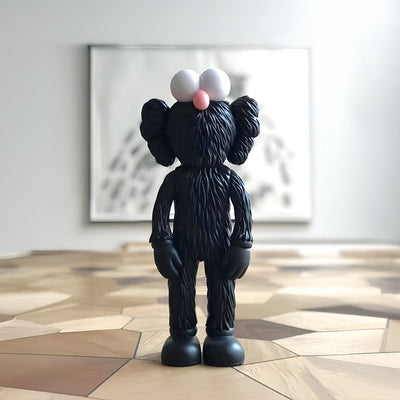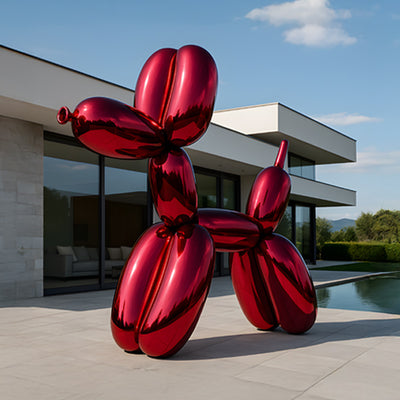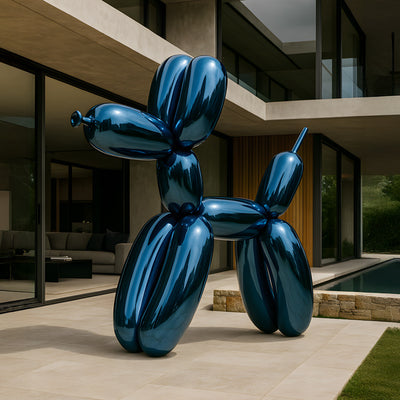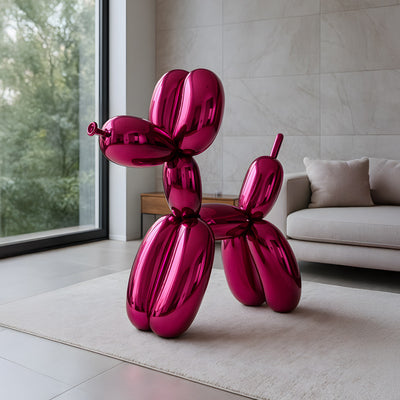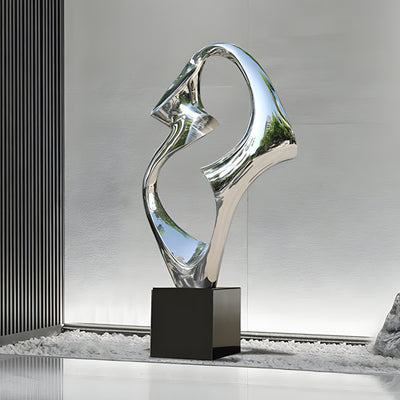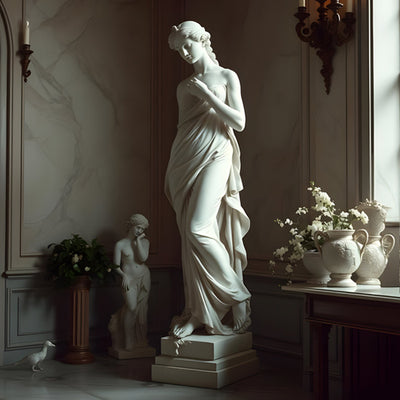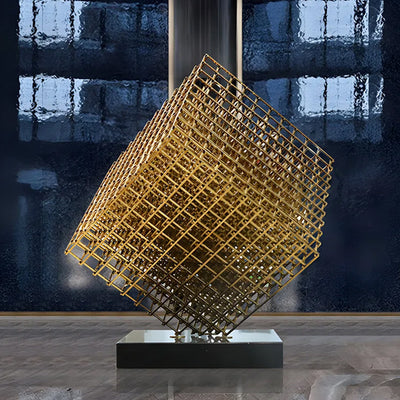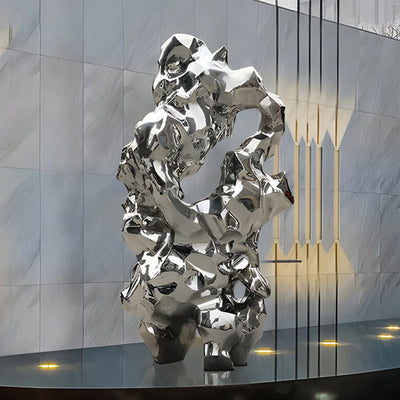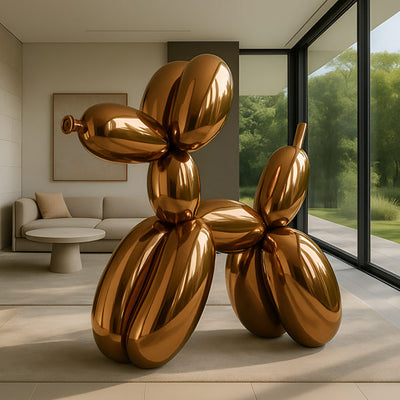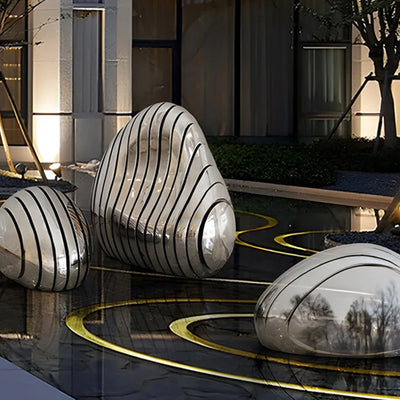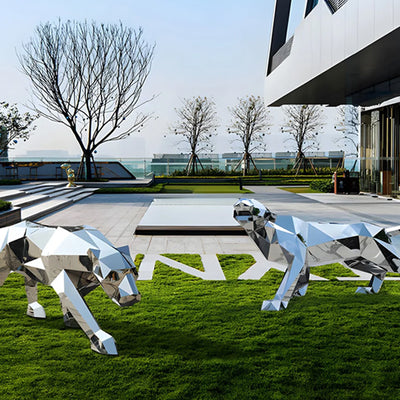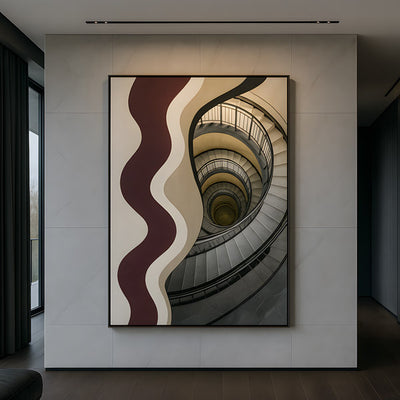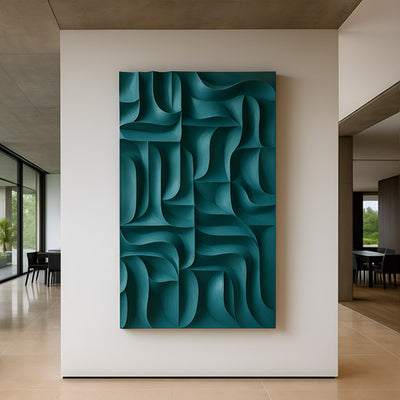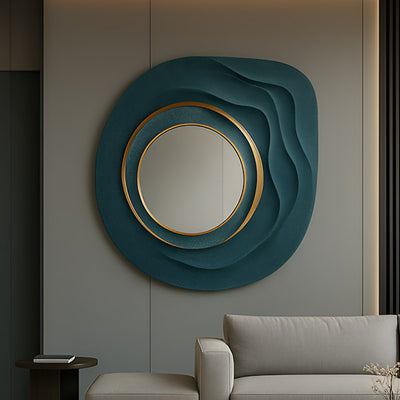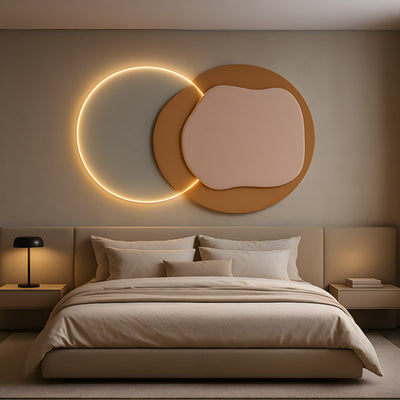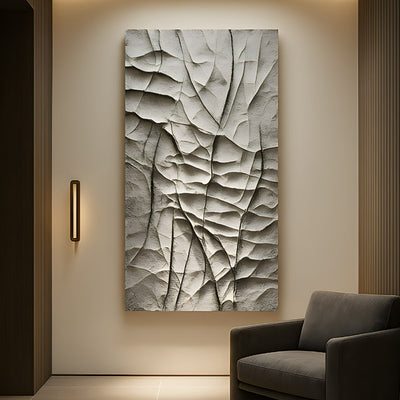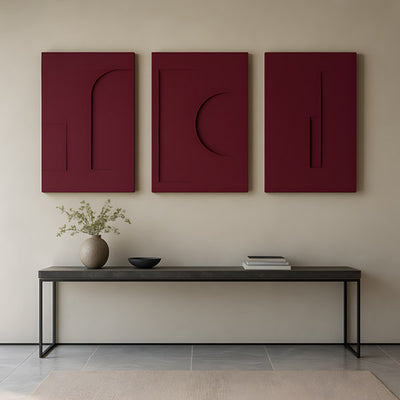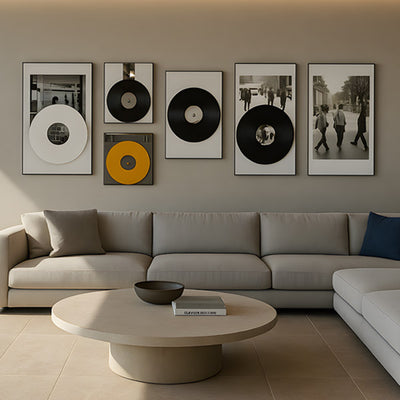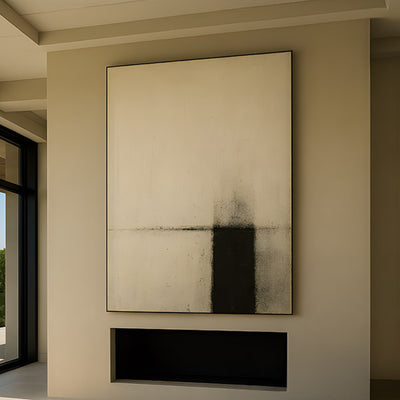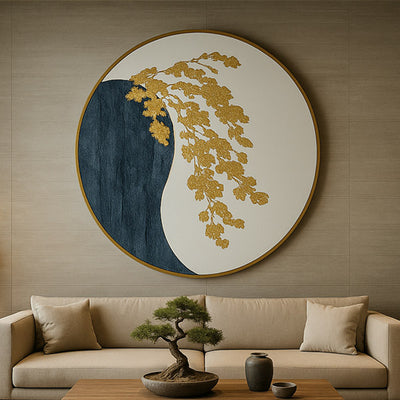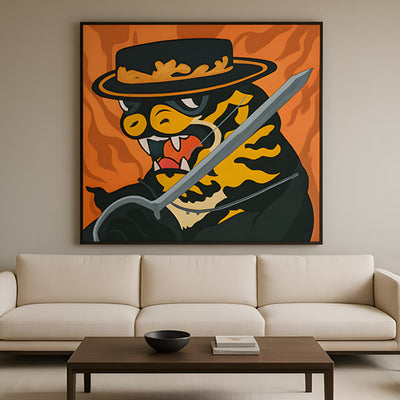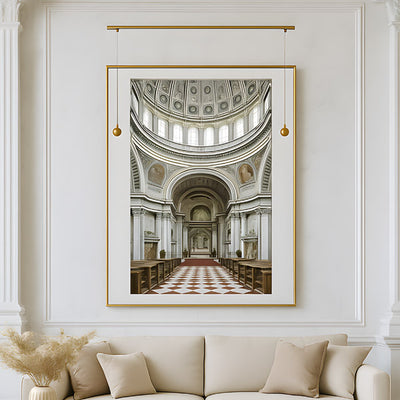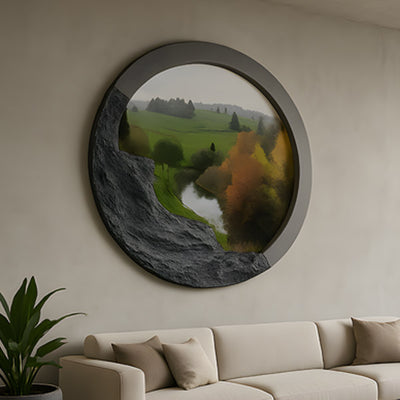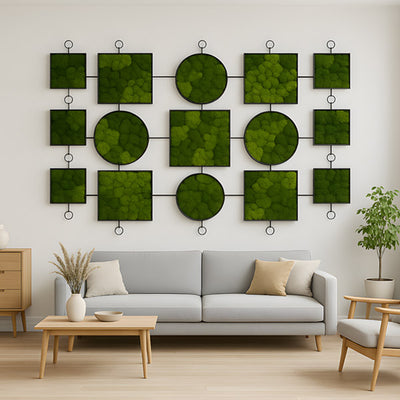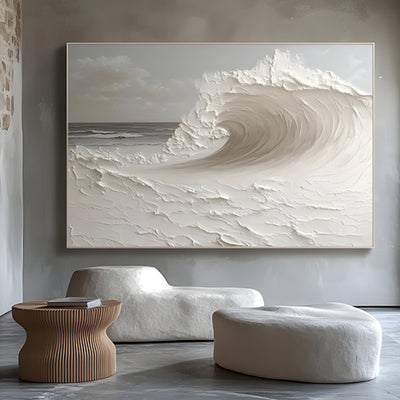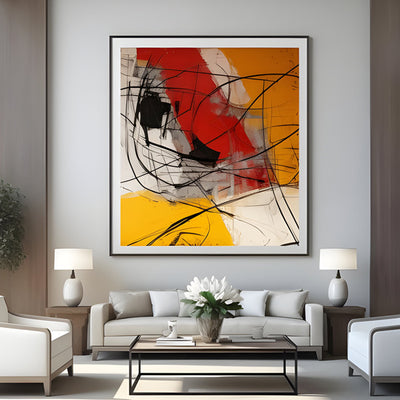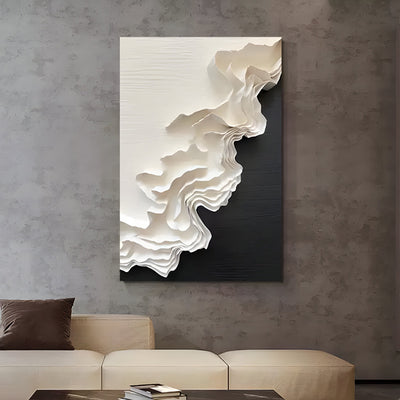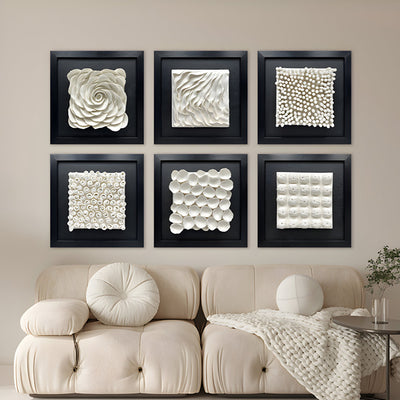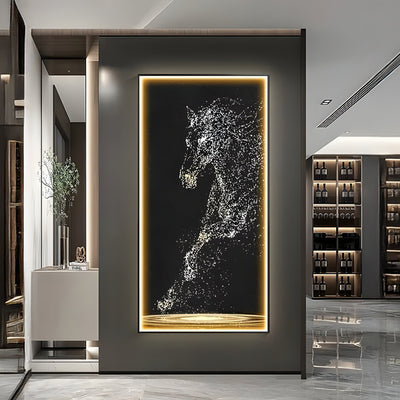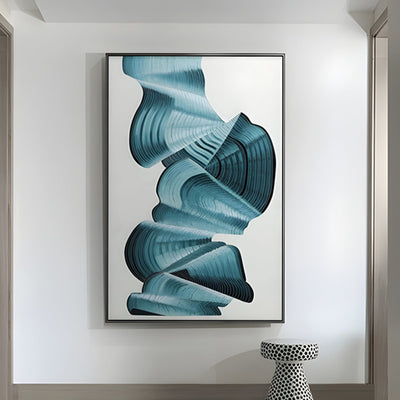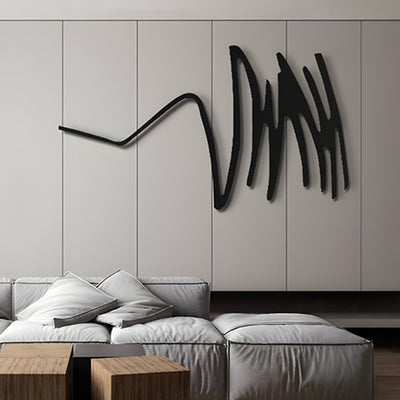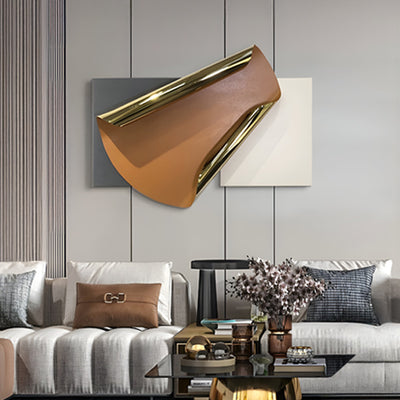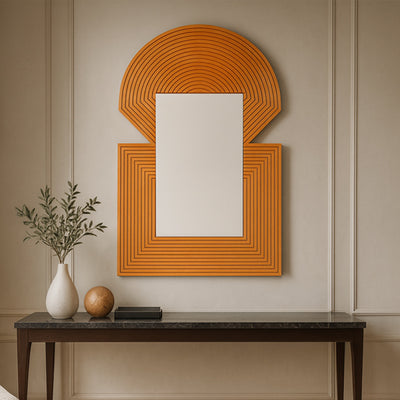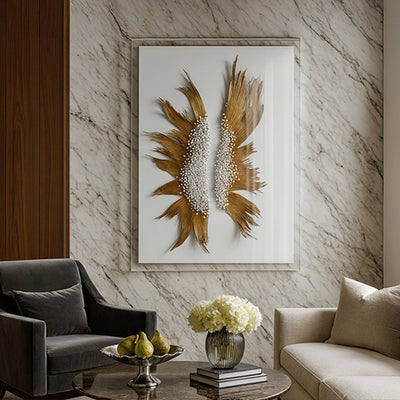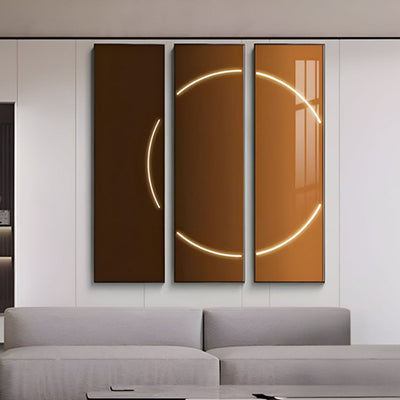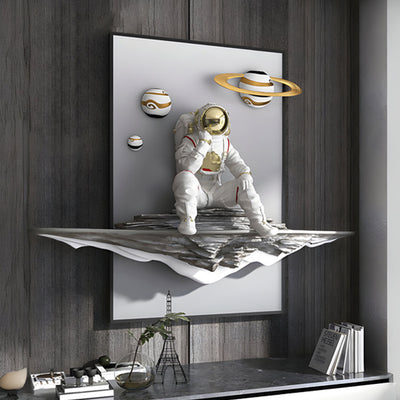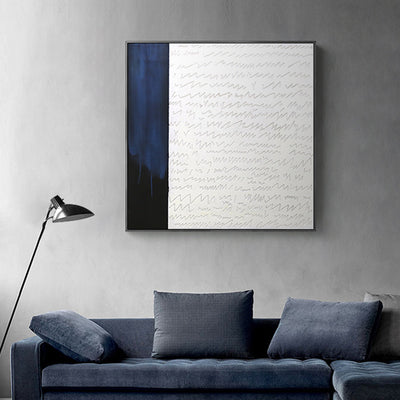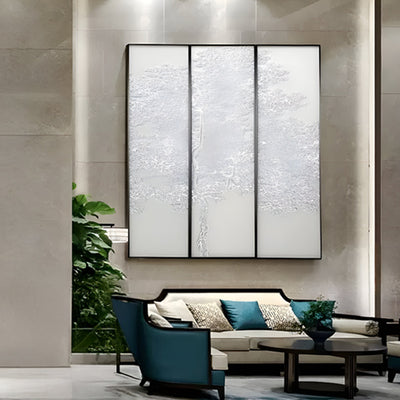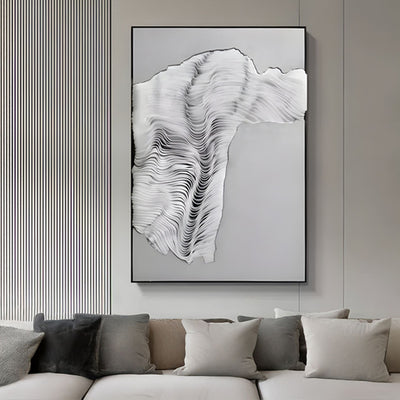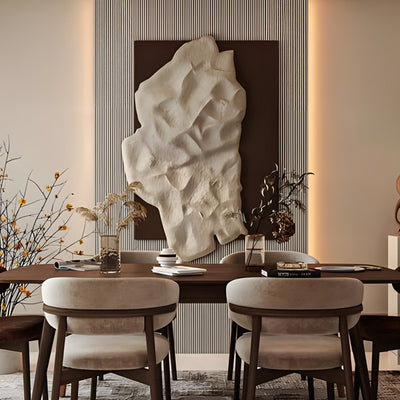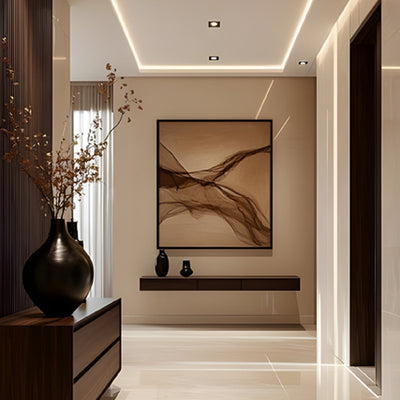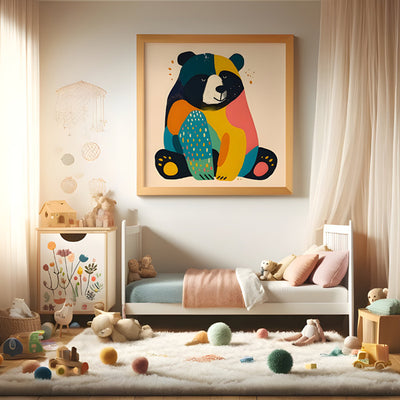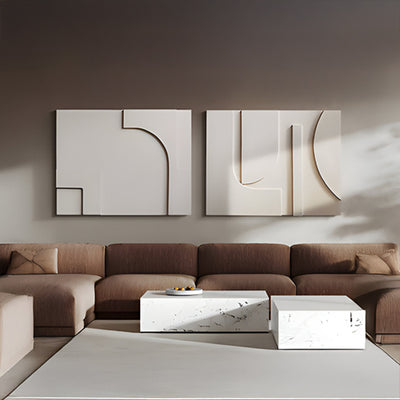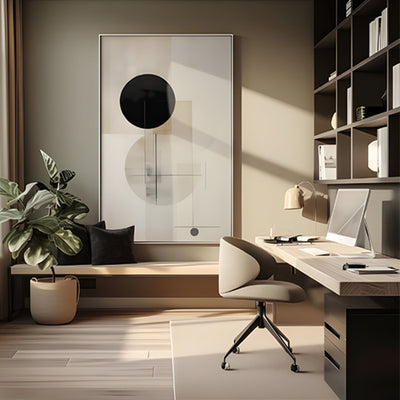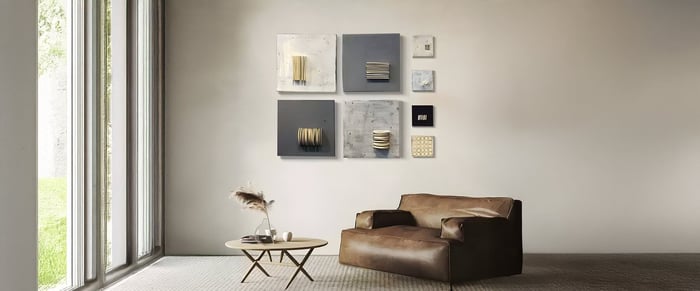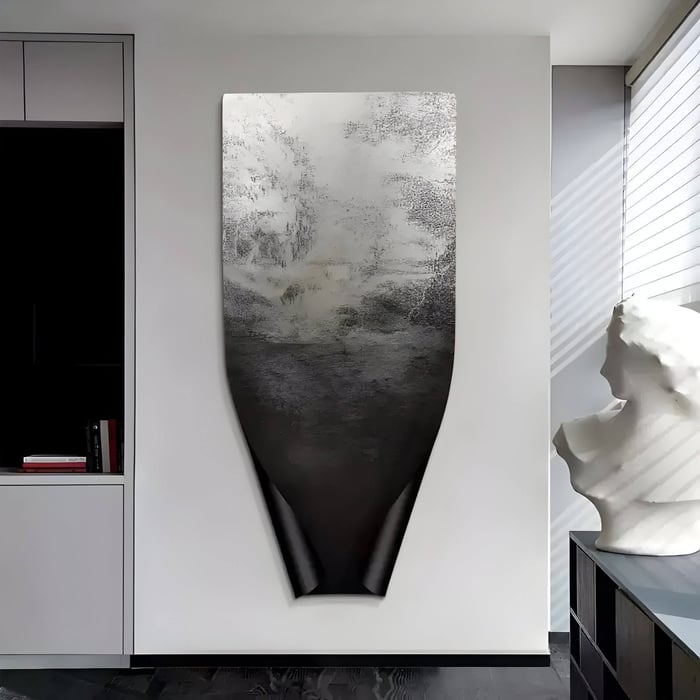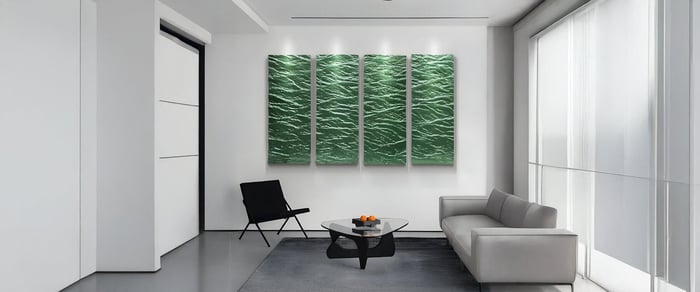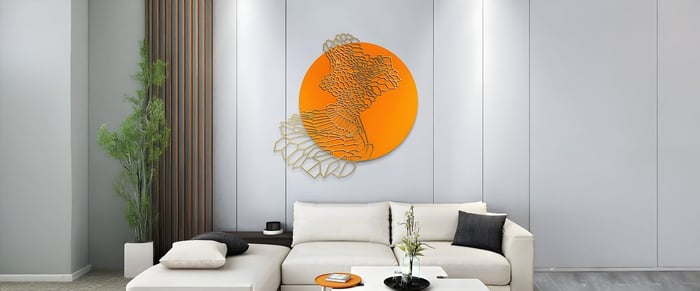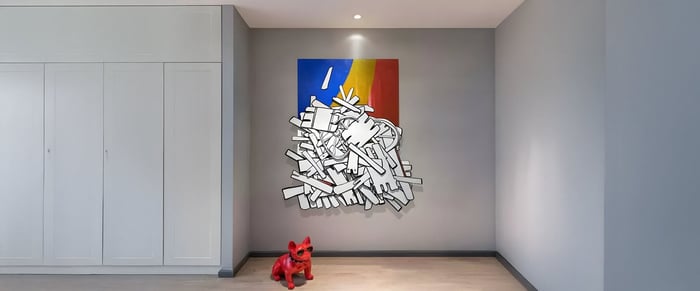Introduction
Imagine stepping into a room that feels like an exhale, free from clutter, alive with intention, and quietly balanced. That’s the essence of zen art. As our lives grow increasingly fast-paced and screen-saturated, many homeowners and professionals are turning to interior styles that encourage calm, mindfulness, and simplicity.
Rooted in centuries of meditative tradition, zen art offers a visual antidote to chaos. Whether you're styling a tranquil living room art wall, choosing calming office art, or creating flow with subtle hallway art, this timeless approach provides a serene foundation for modern life.
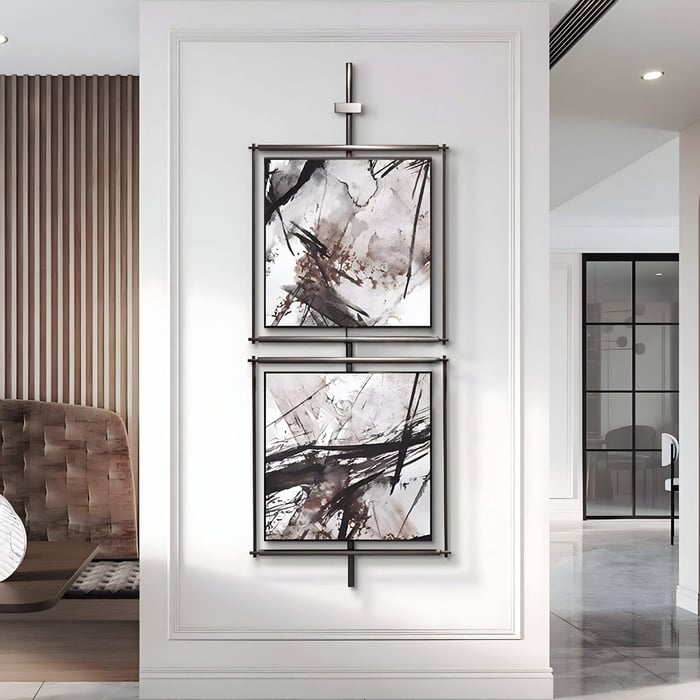
What Is Zen Art? A Timeless Expression of Simplicity
Originating from Zen Buddhism, a spiritual path centered on mindfulness, direct experience, and non-attachment, this artistic tradition expresses its values through visual minimalism and quiet elegance. Instead of relying on intricate detail or bold color, these works emphasize subtlety, often drawing attention to the space between objects: the pause, the silence, the breath.
Traditional formats include ink wash paintings (sumi-e), minimalist calligraphy, and earthy ceramics. These mediums reflect harmony, balance, and asymmetry, inviting viewers into a moment of stillness. Today, these timeless principles are adapted into modern wall décor, offering a serene and intentional presence that suits dining room art, living room art, and peaceful office art environments.
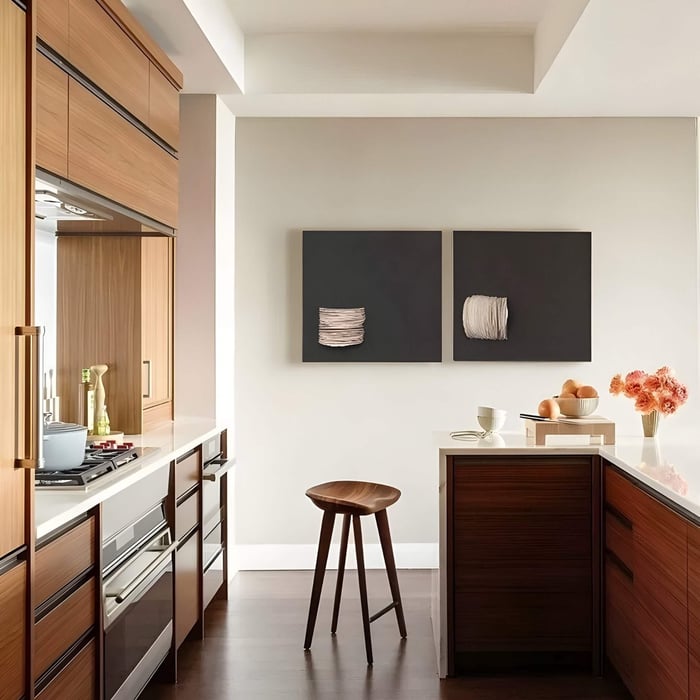
A Brief History of Zen Art
This style finds its roots in East Asia, particularly in China’s Chan Buddhism and Japan’s Zen traditions. Early monks approached creative expression as a meditative practice, brushwork was less about decoration and more about capturing inner stillness. Figures like Sesshū Tōyō, along with haiku poets, helped develop a visual language that embraced imperfection, transience, and harmony with nature.
As these aesthetics evolved, they extended beyond painting and poetry into tea ceremonies, rock gardens, and eventually, interior design. What began as spiritual practice became a quiet cultural force, introspective rather than ornamental. In the modern age, this legacy lives on through minimalist sculpture, digital prints, and wall décor that speaks to ancient philosophies while adapting beautifully to contemporary interiors, from luxury lofts to serene home studios.
Key Zen Art Themes in Interior Decor
Simplicity and Minimalism
At its core, zen art is about reduction, stripping away excess to reveal essence. This translates beautifully to interiors. A single ink brushstroke can center a wall. Neutral color palettes, grays, whites, earth tones, help evoke a quiet atmosphere, perfect for living room art that calms rather than stimulates.
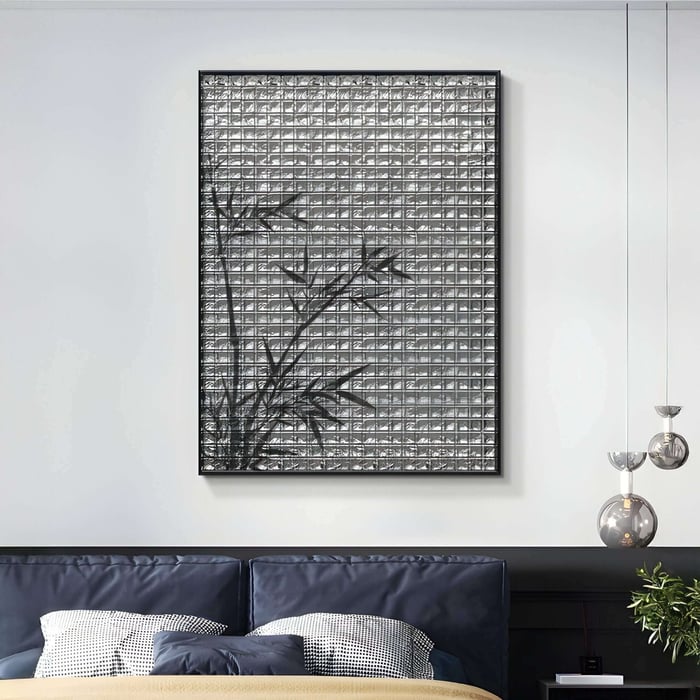
Natural Motifs and Materials
Common subjects in zen art include mountains, bamboo, water, and wind, all natural forces symbolizing fluidity and impermanence. Choose pieces that showcase these motifs or are crafted from raw materials like stone, wood, or handmade paper. These elements create grounded energy for dining room art and even minimalist hallway art displays.
Asymmetry and Imperfection
In Zen philosophy, beauty is found in what’s incomplete or irregular. Wabi-sabi embraces this aesthetic, which is often reflected in uneven brush strokes, rough textures, and off-center compositions. For office art, this can soften sterile work environments and introduce subtle depth.
Spaciousness and Emptiness
The concept of ma, or meaningful emptiness, is central to zen art. It encourages negative space not as a void, but as an active presence. Hanging a sparse piece of artwork on a large, clean wall in a hallway can create a profound sense of stillness, making it one of the most effective approaches to hallway art.
How Zen Enhances Modern Spaces
In the Living Room Art
A large-scale sumi-e print can transform your living area into a refuge from overstimulation. Living room art in the Zen tradition invites pause and presence, making it ideal for gathering spaces that support conversation and relaxation.
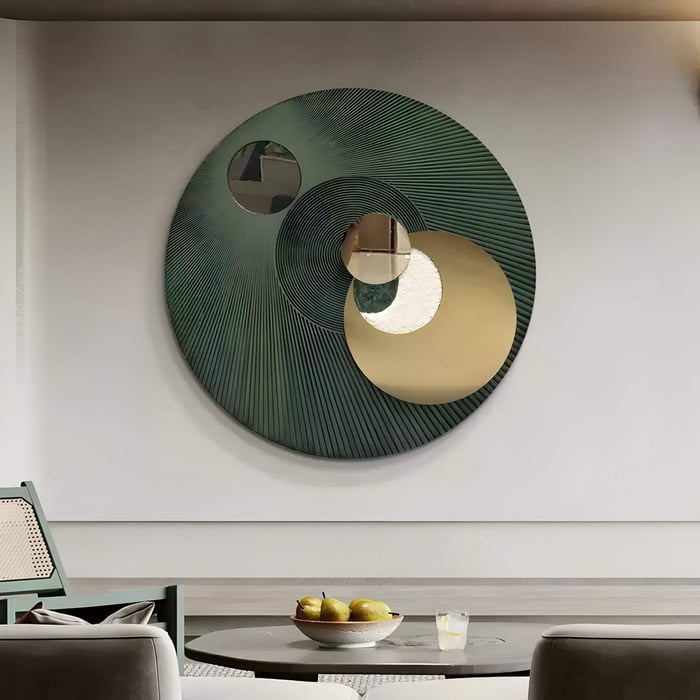
In the Office Art
A single, meditative piece can foster focus and reduce digital fatigue. Consider minimalist office art above your desk, a black-and-white landscape or a contemplative calligraphy piece, to clear the mental clutter and encourage flow during the workday.
In the Dining Room Art
Meal spaces benefit from intentional design. Dining room art featuring natural elements like water or mountains helps to slow the pace of eating and enhance mindful connection. Soft lighting and earthy tones add to the experience of tranquility.
In the Hallway Art
Too often overlooked, transitional spaces offer prime real estate for zen art. A quiet ink painting, carefully placed at eye level, can transform a functional corridor into a thoughtful, grounding passage. Hallway art doesn’t need to shout, it just needs to guide.
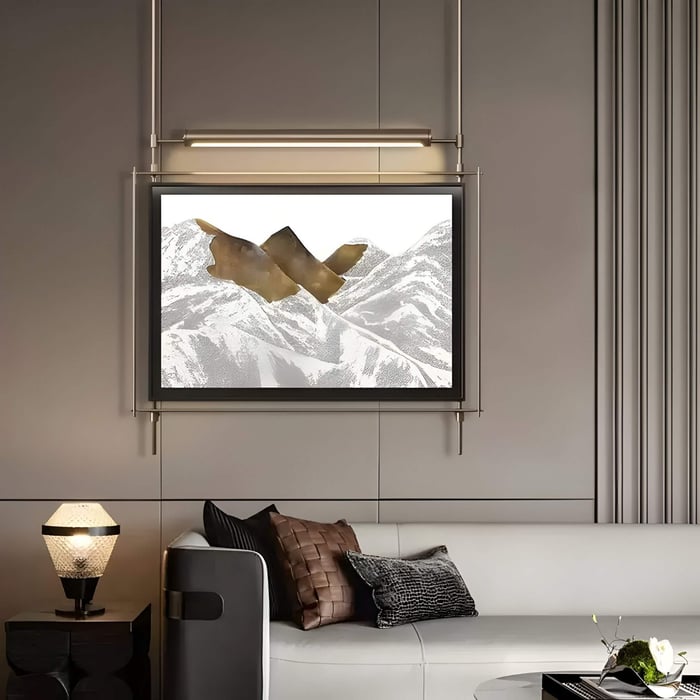
Zen Art vs. Other Minimalist Styles
While this mindful aesthetic shares common ground with other minimalist styles such as Scandinavian and modernist design, its purpose is fundamentally different. Scandinavian minimalism typically emphasizes comfort and practicality, think soft textures, clean lines, and functional beauty. Modernist abstraction, on the other hand, leans toward intellectual expression, often using bold color blocks and precise geometric forms.
By contrast, the Zen-inspired approach is deeply rooted in emotional and spiritual resonance. It’s less about form for form’s sake and more about cultivating presence and inner peace. The styles, however, don’t need to exist in isolation. A Nordic console paired with a brushwork ink painting or a textured ceramic wall piece can strike a harmonious balance. Just be mindful to maintain visual space and simplicity, key to effective living room art, soothing office art, or flowing hallway art design.
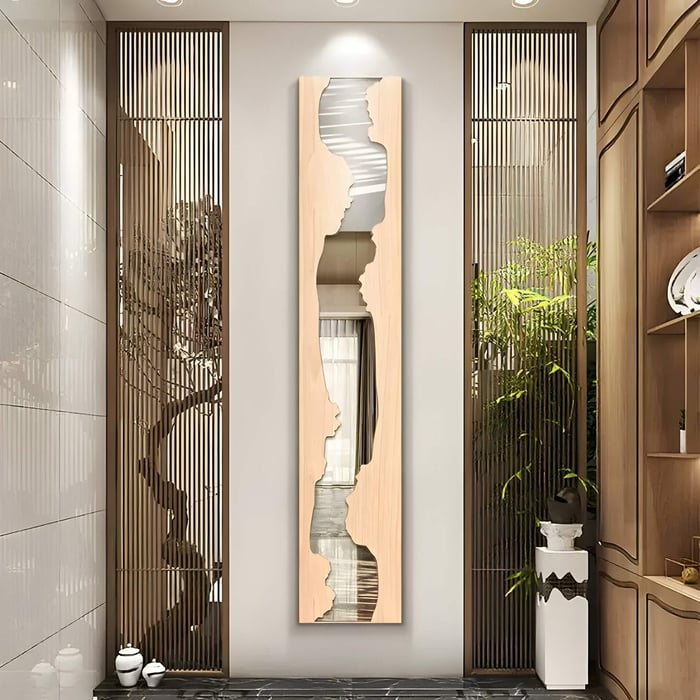
Choosing the Right Zen Art for Your Space
When selecting zen art, consider both emotional impact and environmental factors. A soft-toned landscape might work beautifully in a north-facing room with gentle light, while a bold calligraphy piece could anchor a sunlit wall in your home office.
Framing should align with the natural feel of the art, opt for simple wood, bamboo, or matte black. Living room art benefits from pieces that fill a focal space without overpowering it. For office art, smaller works can have significant impact when placed where your eyes land most often.
For dining room art, hang your piece at seated eye level to foster connection during meals. And with hallway art, consistency in spacing and scale across the length of the corridor can create a calming rhythm that gently guides movement.
Above all, prioritize pieces that evoke a sense of pause. That moment of breath, that’s where the true beauty of zen art lives.
Conclusion
As both an art form and a philosophy, zen art offers more than aesthetic value, it fosters a deeper connection to the present. Rooted in centuries of meditative tradition, its calming visuals and mindful themes provide a sanctuary from the chaos of daily life.
Whether you’re styling living room art to reflect tranquility, choosing office art that supports focus, or curating subtle hallway art that transitions with grace, zen art helps create environments aligned with peace, simplicity, and purpose.
Ready to invite this serenity into your space? Browse our curated Zen Art collection.
